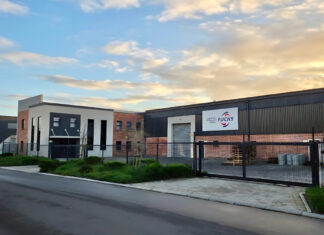Biomass is building up steam
Local interest in using biomass for industrial thermal applications is growing
Pressure is mounting for local manufacturers to swap fossil fuels for biomass to reduce their carbon footprints and mitigate carbon taxes. Experienced steam and boiler operations and maintenance service provider, Associated Energy Services (AES) has spent the past 14 years reviewing solutions, says Commercial Director, Dennis Williams.
The exception to the rule
While the market requirements and the drive to make the biomass switch-over are growing, Williams points out that in practice, this is not as prolific as is commonly believed: “Currently, in South Africa, biomass is mostly for own-energy usage, such as by sugar mills (bagasse) and sawmills (timber residues). The application of biomass for industrial thermal energy applications – such as steam – are still the exception,” he explains.
Notwithstanding this, however, Williams adds that just over 10% of AES’s current client base uses biomass for steam generation, but that interest in alternative fuel sources such as biomass is growing amongst another 20 to 30% of the company’s current client base.
Multinationals with stringent global carbon reduction targets, and food manufacturers supplying sustainability- and -socially-conscious retailers are under the most pressure to change. ”Multinationals assume that it is as easy to decarbonise in South Africa as it is elsewhere. That is simply not the case, as we have a completely different and more constrained energy mix. Also, coal is available at a relatively low cost locally,” he advises.
Williams says that every user aims to access gigajoules of energy using a consistent and repeatable fuel specification – so that they can select suitable technology and maximise efficiency to achieve the lowest possible steam cost.
Every biomass type has different technical characteristics. However in general, biomass has low energy and bulk density. Moisture content also impacts on the realisable calorific value of the fuel. “The particle size and processing required to match a suitable combustion system is a critical consideration. In some cases, the impact of silica – entrained within the biomass – can impact on ash clinkering and combustion system complexities. In agricultural biomass, the chemical composition of the ash can have slagging or fouling impacts on the heat transfer system. This must be accommodated in terms of the design of the combustion or boiler system utilised,” he explains.
Innovative integration
Retrofitting existing energy plant is possible: “This usually means re-use of the boiler heat exchange component of the steam plant, and retrofitting a combustion system to suit the fuel – such as a gasifier or Dutch oven with a step grate.”
New technologies include bio-digesters with CHP (Combined Heat and Power) plants including waste heat recovery, gasification or even pyrolysis solutions – with suitable heat recovery in the form of steam generation plant on the back-end, to convert the thermal energy to usable steam.
In addition to the capital investment, companies also need to consider storage space and the logistical considerations of transporting (frequently bulky) biomass.
“The major impact is usually the cost of technology change, as a new boiler system is usually required. The major ‘pro’ is that CO2 emissions from biomass combustion are deemed carbon-neutral – and therefore the carbon footprint and carbon tax benefits attributable to their usage versus high-carbon fossil fuels is substantial,” Williams observes.
Stand-out steam success stories
Taking the above into account, AES has still had some ‘stand-out’ steam success stories, where clients have successfully converted to the use of biomass for their thermal energy (steam) requirements:
- A FMCG client has applied biomass for over 10 years after sourcing a state-of-the-art biomass boiler from Belgium: “The unit provided about 6 – 8% efficiency benefit over lower-cost waste heat boiler solutions – but has a capital cost of some 40% more. The plant has delivered on its decarbonisation requirements, but increased costs operationally,” Williams reports.
- A dairy client introduced a biomass boiler to offset its use of fuel oil: “They saw a substantial drop in their carbon footprint as a result, and will see significant ongoing benefits in terms of massively reduced carbon tax liabilities,” Williams comments.
- A food manufacturer, which chose a biomass hot water solution to offset the carbon footprint of liquid fuels: “This plant has only been operational for 18 months, and is tied to a production plant expansion which is yet to be undertaken. This will enable the client to reduce operating costs, while also ‘greening’ its overall energy mix,” he says.
The future of biomass
Williams advises that companies considering changing to biomass should partner with an experienced service provider, which is technology- and –fuel-agnostic, with project execution and operations and maintenance experience: “Be open-minded, clear about your goals and intentions and understand that decisive action is critical to making progress,” he recommends.
AES’s input entails securing a reliable supply of biomass to prevent untenable cost escalations – as more and more companies jump onto the biomass energy space.
Typical biomass resources are timber and timber-related residue. Agri-residues such as sunflower husks, corn cobs, peach / apricot pits, macadamia shells, straw or plant fibres are now considered. Other novel biomass uses include vegetation for rehabilitation of land, and energy crops.
“Some biomass suppliers have tried to formalise their offerings to provide a basis for quality, specification and cost consistency, and as traditional options such as timber residue get taken up, there will be a need for alternatives in the market.
The process will be repeated to again define specifications, set quality parameters, identify suitable combustion or boiler technology and determine a workable set of economics. It gets more complicated as each level of biomass gets absorbed by energy plants. Lowest-cost options are taken up first, and latter alternatives can be more costly,” Williams concludes.
















